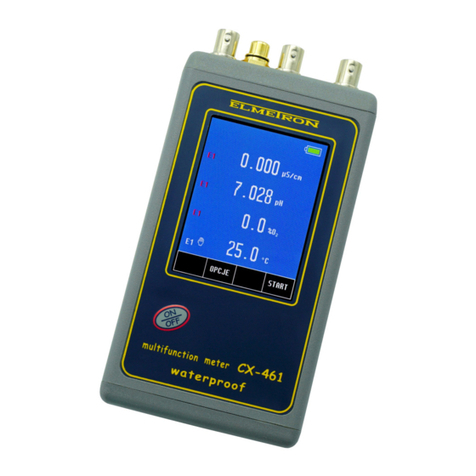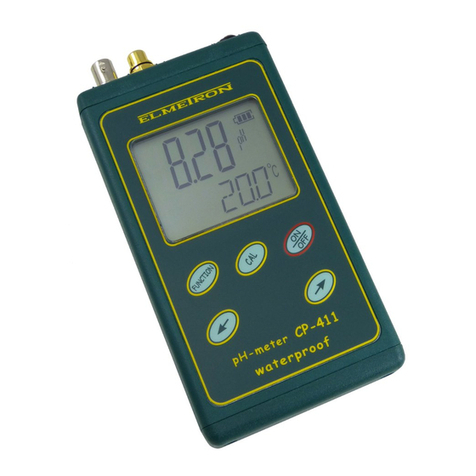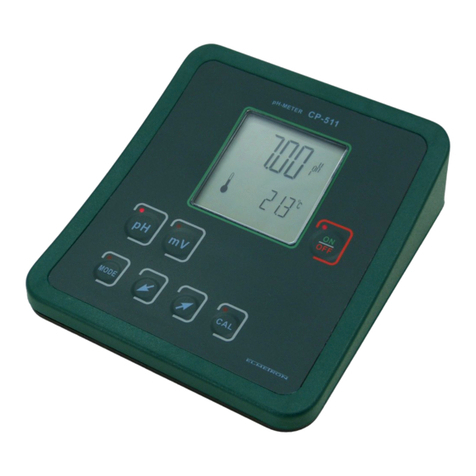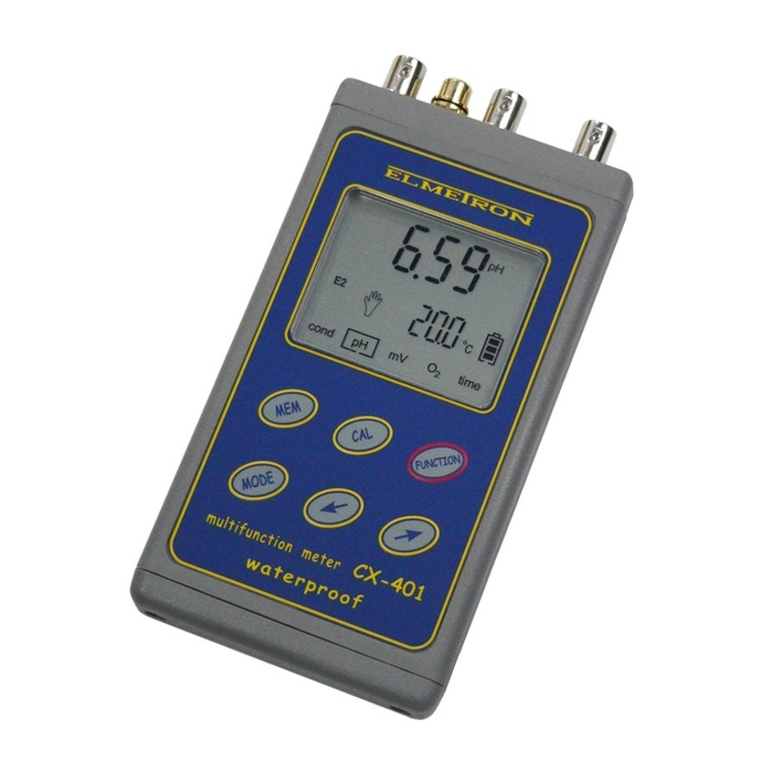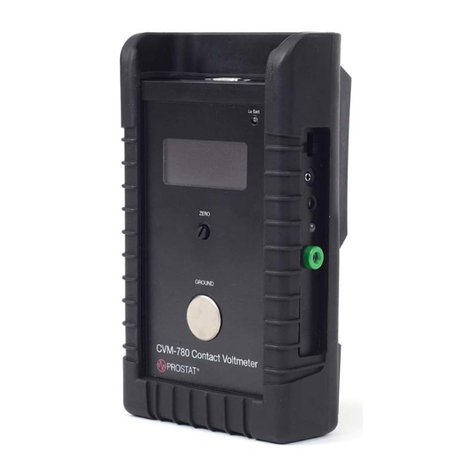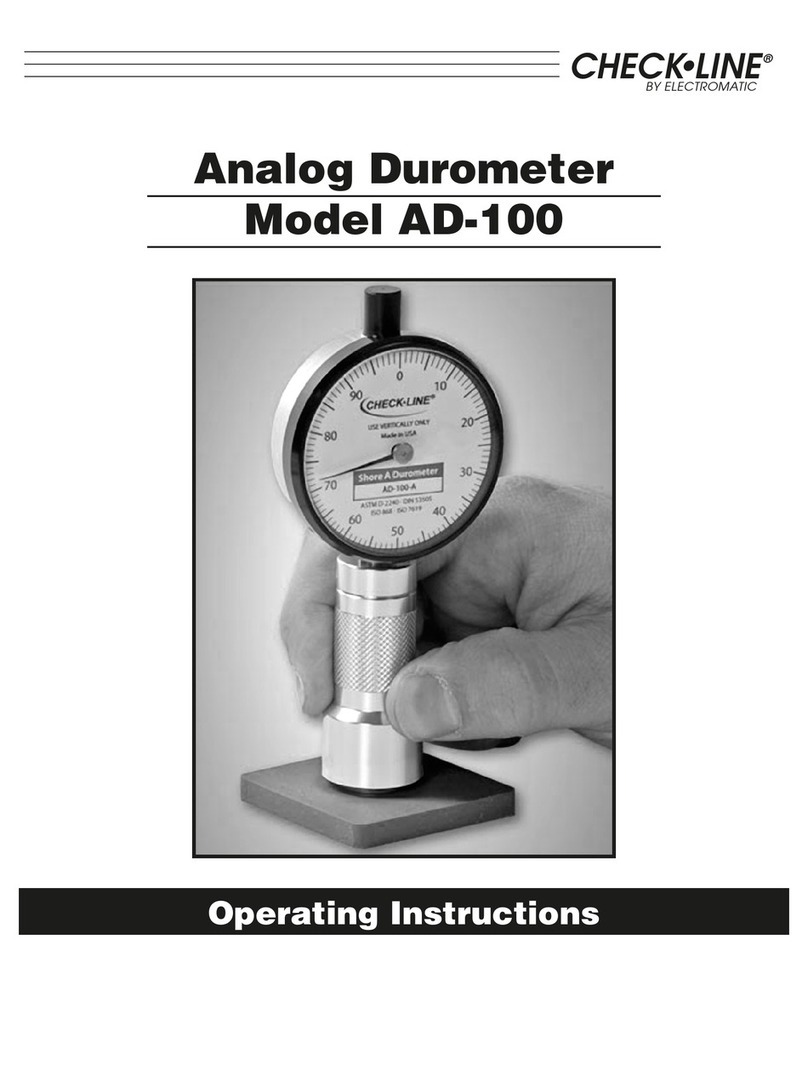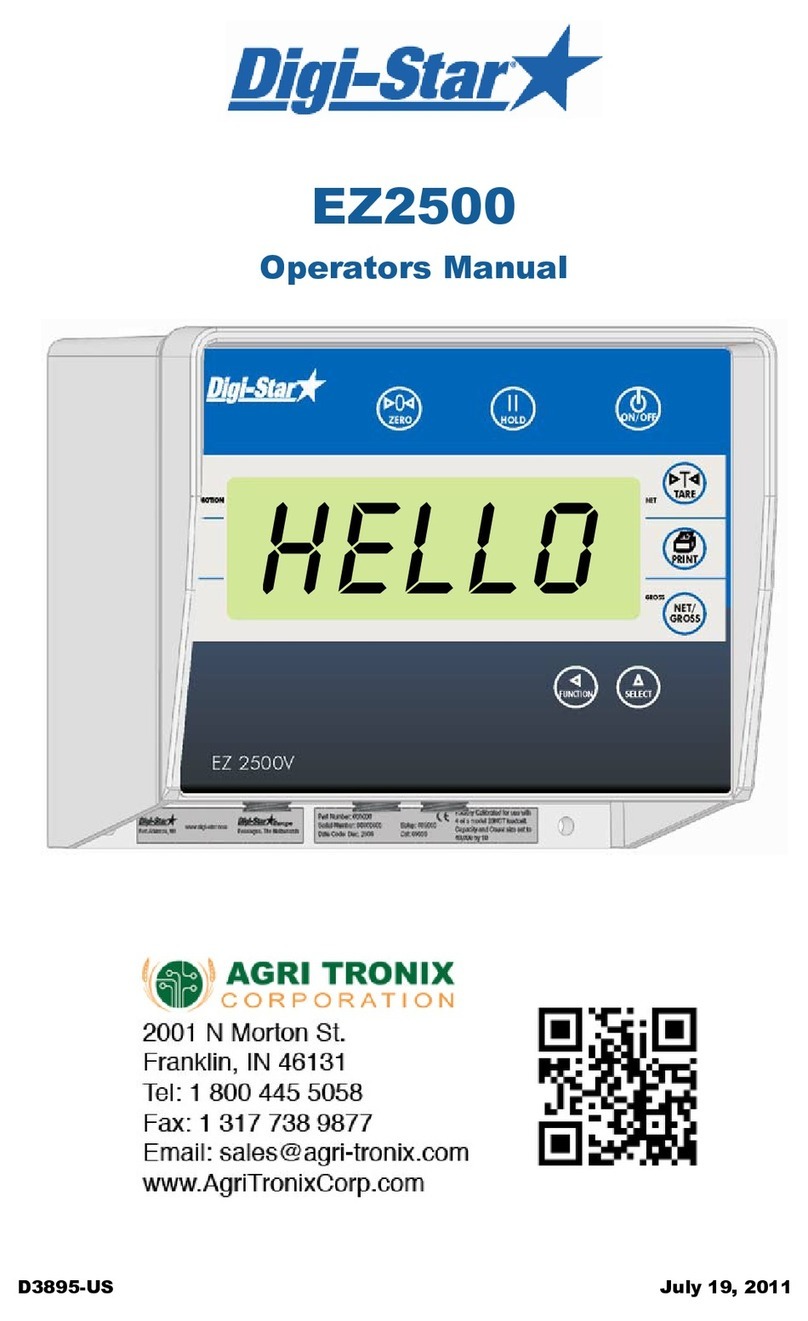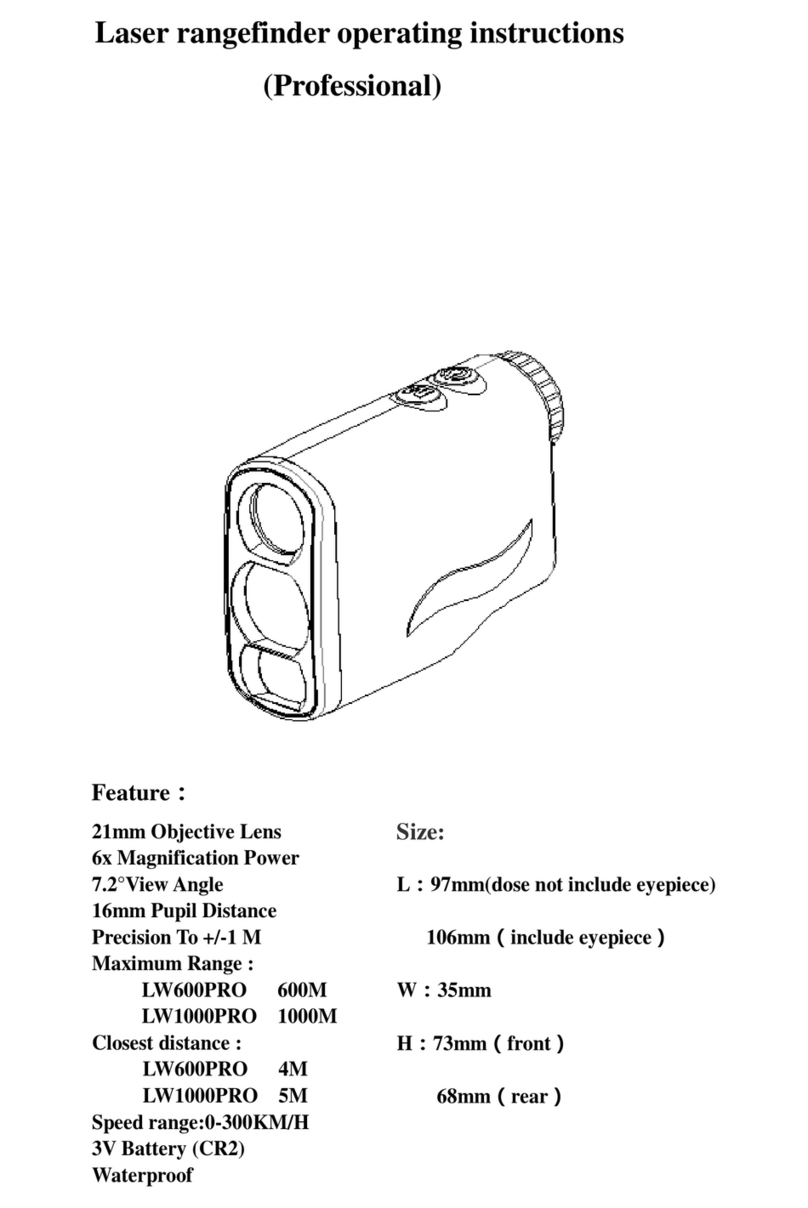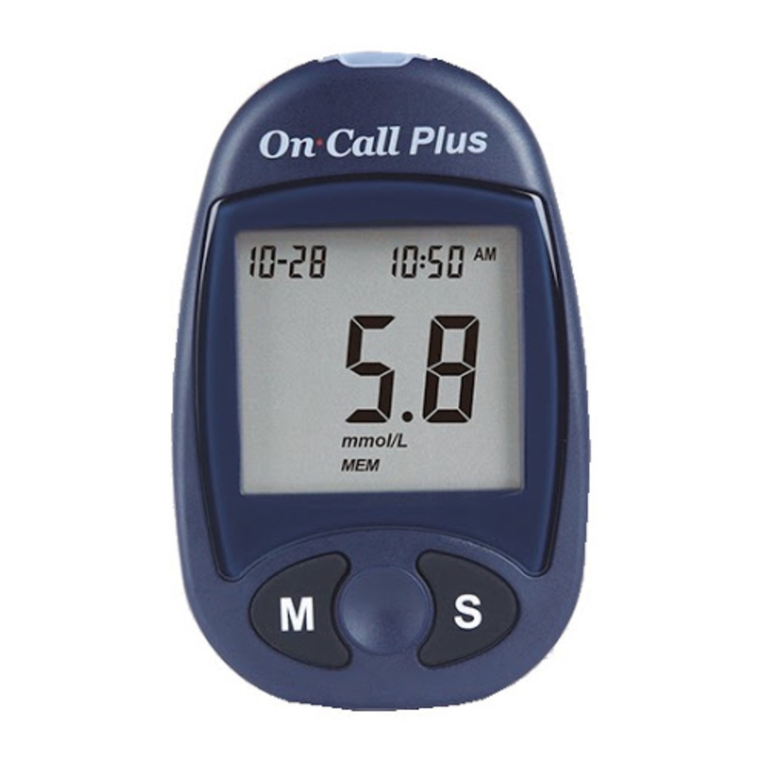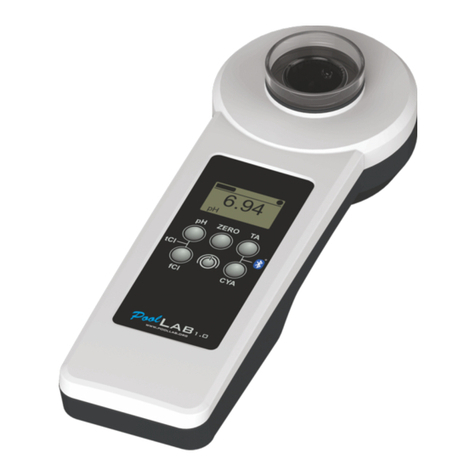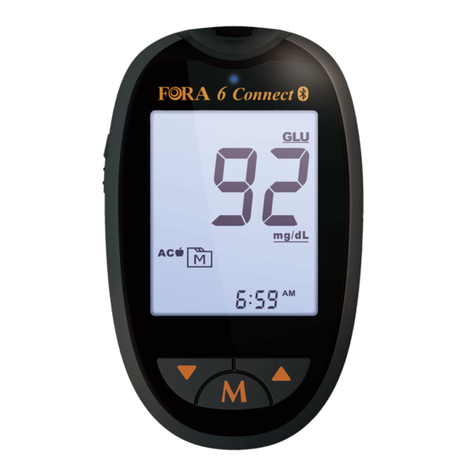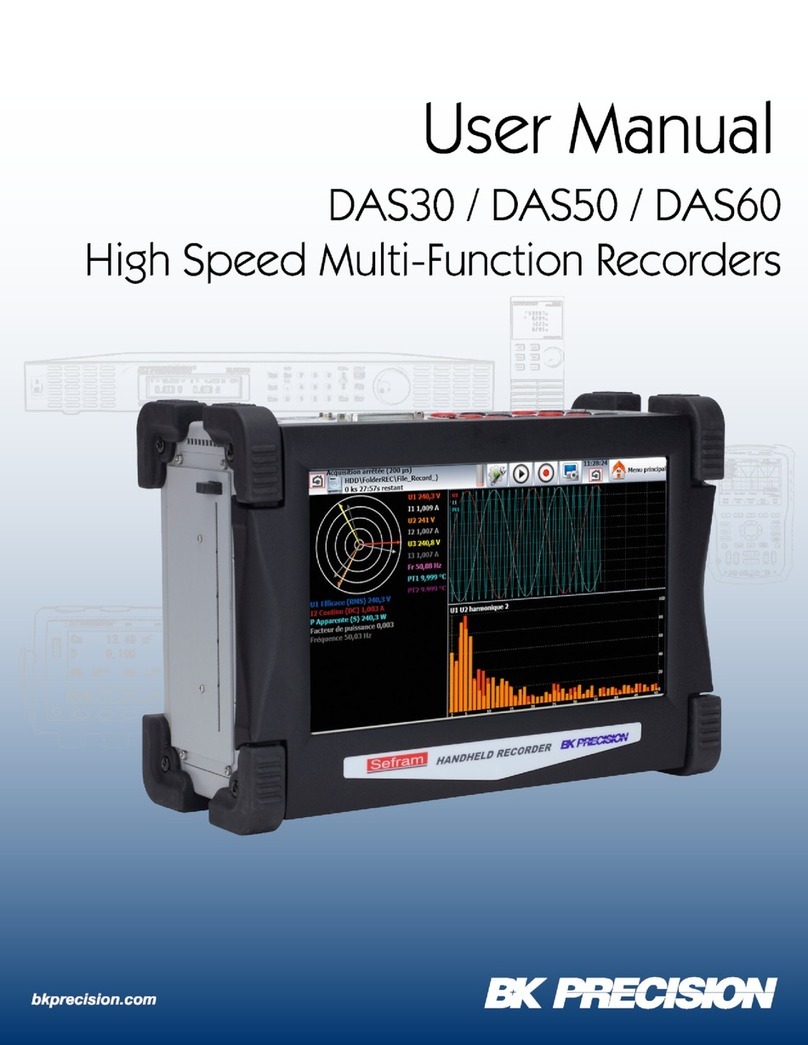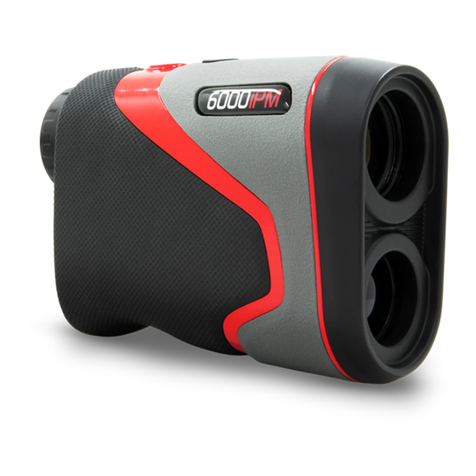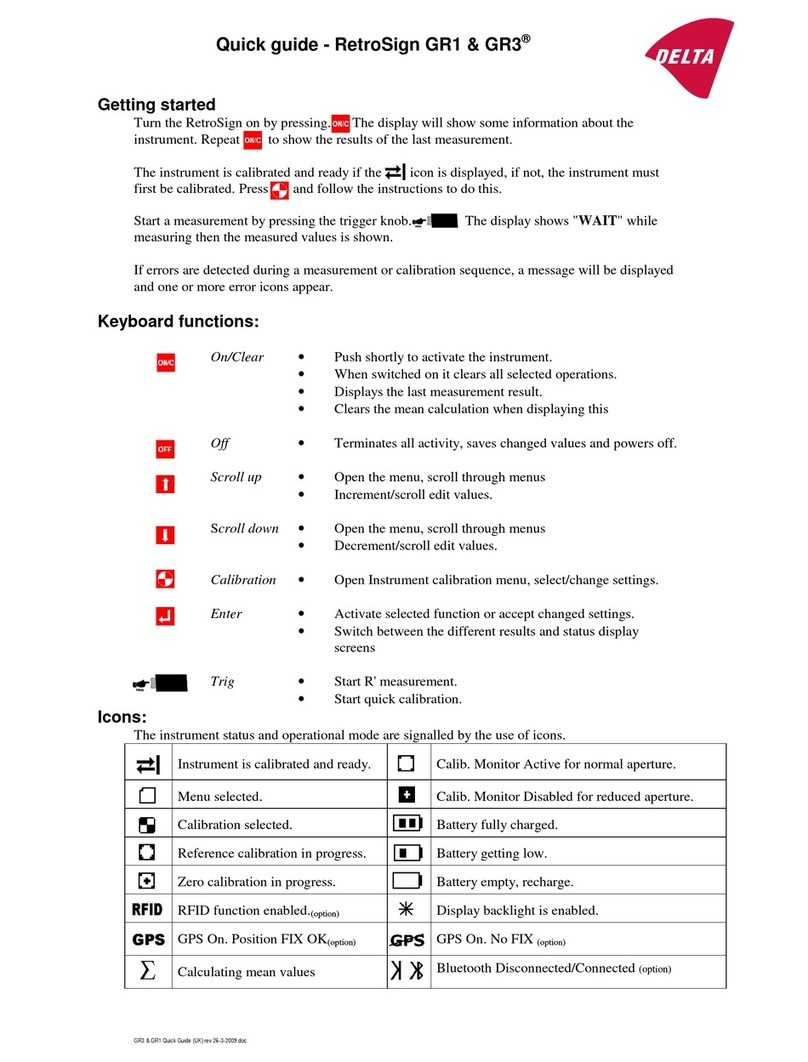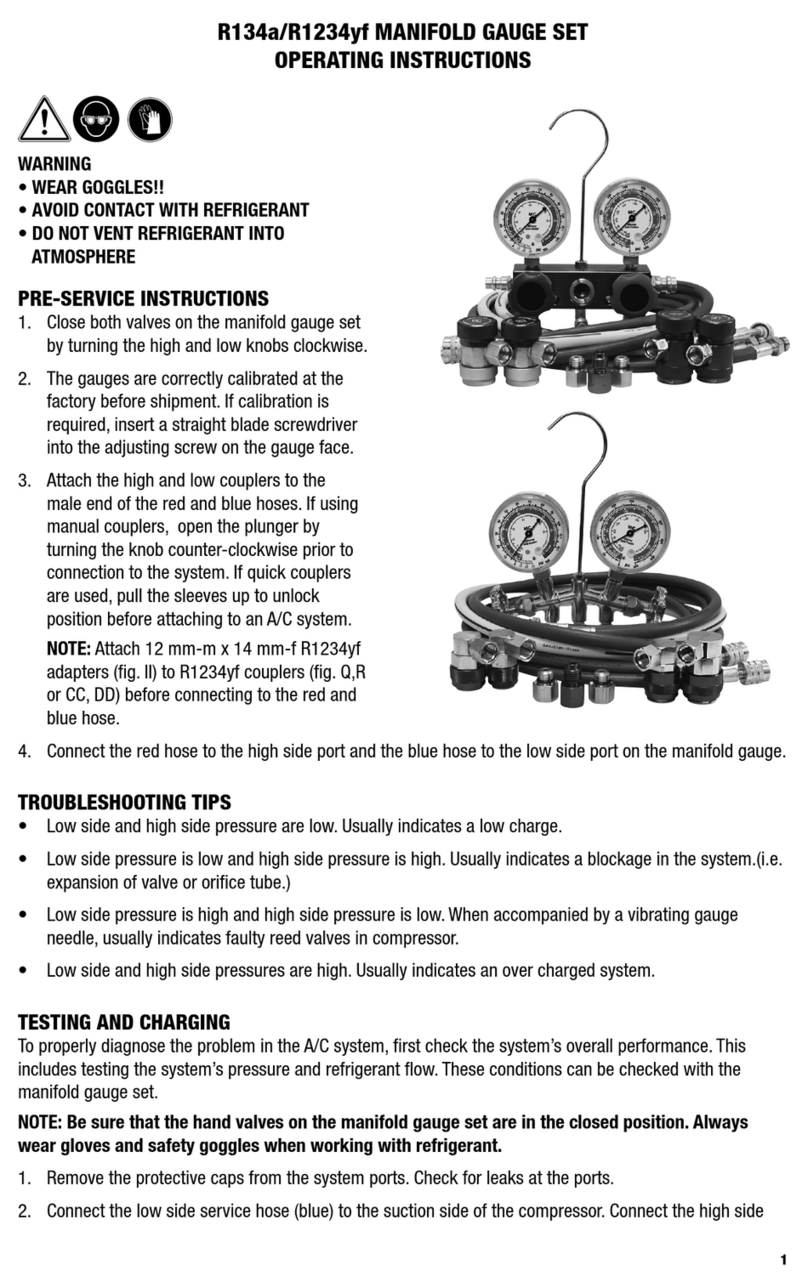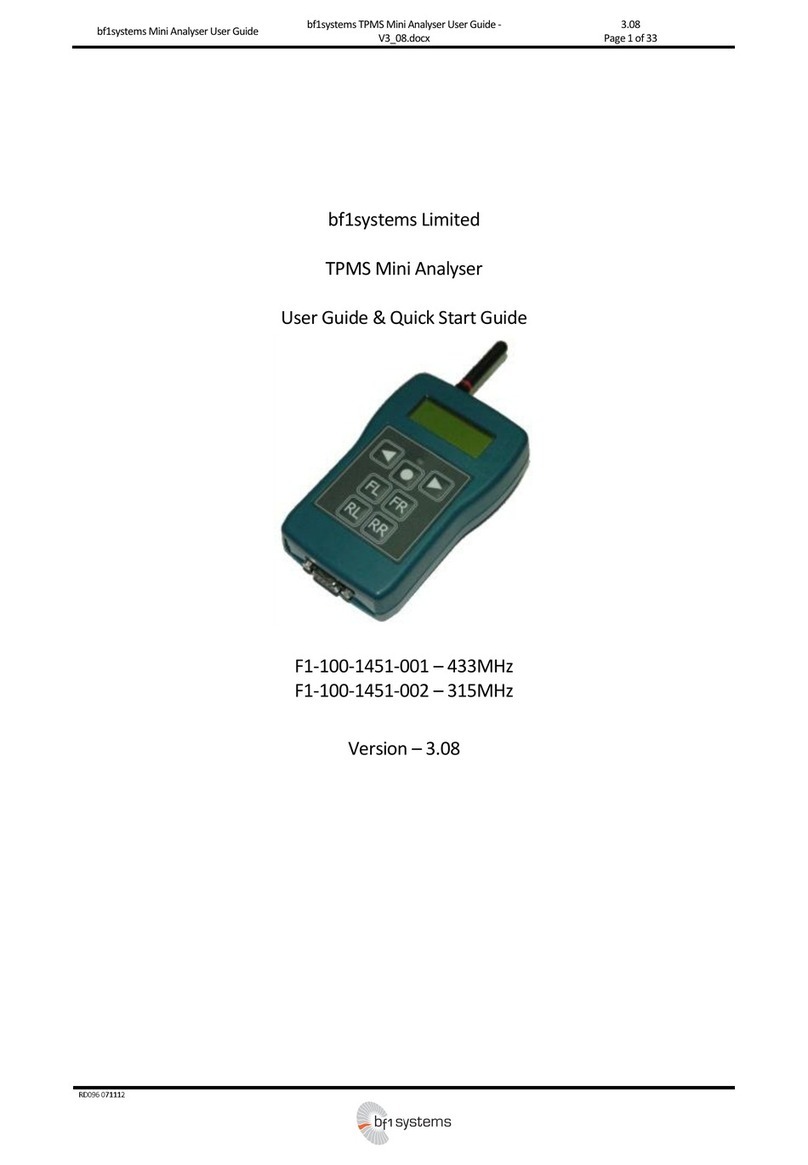ELMETRON CP-411 User manual

WATERPROOF
pH-METER
CP-411
USERS MANUAL
Sp. j.
41-814 Zabrze, ul. Witosa 10, POLAND
tel. +48 32 / 273 8106, tel./fax +48 32 / 2738114
www.elmetron.com.pl

WATERPROOF
pH-METER
CP-411
USERS MANUAL
Before use, please read this instruction carefully!
Users manual CP-411 pH meter

W A R R A N T Y
The “ELMETRON” company gives 24 months of
warranty for the CP-411 pH-meter
number.........................................
In case of damage the producer will repair the meter
within 14 days from the day of delivery.
The warranty doesn’t cover the damages caused by
usage not in conformity with the users manual, using
wrong power adapter, mechanical damages and
damages caused by repairs made by unauthorised
persons.
NOTICE: Before sending the meter to us please contact the
firm by phone.
When sending the meter, the used electrode, temperature
probe and power adapter should be also included.
Date of production...........................
Date of sale.....................................
Date of expiry..................................
Sp. j.
41-814 Zabrze - Grzybowice ul. Witosa 10
tel. (+48) 32 2738106, fax (+48) 32 2738114
POLAND
Users manual CP-411 pH meter

CONTENTS
1. Exploitation notices 2
2. The characteristics of the pH-meter CP-411 3
3. What is the meter designed for? 4
4. Outside view 5
5. Switching the meter ON and OFF 7
6. Preparation to work 8
7. Preparation of the pH electrode 9
8. Calibration of the pH electrode 10
8.1 Calibration with automatic temperature compens. 11
8.2 Calibration with manual temperature compens. 12
9. pH Measurement 13
9.1 Measurement with automatic temp. compensation 13
9.2 Measurement with manual temp. compensation 14
10. Notices about the temp. compensation and
interpretation of the pH measurement results 15
11. Temperature measurement 18
12. Freezing the result on the display 18
13. Power source and changing the battery 19
14. Equipment 19
15. Technical Data 20
Users manual CP-411 pH meter

- 21 - - 2 -
1. EXPLOITATION NOTICES
Dear User!
We present you a device distinguished by accuracy according
to the technical data and by a high stability of the displayed
results. We believe that the measurements will not cause you
any trouble and that the pH-meter will operate without any
inconvenience. Before starting the measurements please
read this manual carefully in other case using the meter
may cause you a troubles.
The employing of good-quality electrodes and their replacing
after a suitable time ensures obtaining of high measuring
parameters. We want to call your attention to the fact, that
electrodes have a much shorter working life than the pH-meter.
During the operation the electrodes have a major impact on the
measurement quality. Typical symptoms of an improper
operation of the electrode are deterioration of final result
stability, its flowing as well as a higher measuring error. Part of
the users has problems, arising from employing electrodes
not being preconditioned before the measurement or
making the measurements without removing the shielding
ring from the liquid junction or taking measurements with
a plugged junction. This situation can take place in case of
using electrode improper for the measured solution, ex.
Standard electrode for the sewage or liquids with deposits
measurements. Such measurements require using special
electrode for sewage, the situation is similar with meat, cheese,
soil etc. The application of an improper electrode can make the
measurement difficult or impossible, even after a very short
time. Therefore, if you observe improper operation of the device,
please take control measurements with another electrode or
check the used electrode with another pH-meter. Generally the
deterioration of pH-meter work is caused by the electrode
and not by the pH-meter.
The essential feature of our products is their low failure
frequency. However if your pH-meter will fail, our firm
immediately performs its warranty repair.
We wish to you a pleasant and trouble-free work with our meter.
Users manual CP-411 pH meter

- 3 - - 20 -
2. THE CHARACTERISTICS OF THE pH-METER CP-411 15. TECHNICAL DATA
The CP-411 pH-meter belongs to the newest generation of
measuring devices with high accuracy and repeatability of
the readings and very easy operation.
FUNCTION: pH temperature
RANGE: 0.00 ÷ 14.00 pH - 50.0 ÷ 199.9 oC
RESOLUTION: 0.01 pH 0.1 oC
ACCURACY:
(±1 digit)
±0.01 pH In range 0 ÷100 oC
±0.8 oC
out of this range
2.0 oC ±1 digit*
Two kinds of power source - battery and power adapter
enable work in field and long-lasting measurements in the
laboratory. Thanks using the newest generation electronic
elements the meter has very low power consumption what
greatly increases the operation time on 1 battery. * accuracy of the meter with standard temperature probe, in case of using
PT1000 1/3B probe the accuracy may be greater.
The meter is equipped with large LCD display, it enables
observing the value of pH measurement or temperature.
Waterproof housing makes working in difficult conditions
possible. Small size and weight make working in the field
easier.
INPUT IMPEDANCE: 1012 Ω
TEMPERATURE COMPENSATION: automatic
COMPENSATION RANGE: -5.0 ÷ 110.0 oC
pH ELECTRODE CALIBRATION: automatic,
Main features of the CP-411 pH-meter are: in1÷3 points
- high accuracy and stability of the reading;
- automatic temperature compensation; THERMAL STABILITY OF ZERO : 0.001 pH/ oC
- electrode calibration in 1 to 3 points; OPERATING TEMPERATURE: -5 ÷ 45 oC
- automatic recognition of 3 pH buffers 4,00; 7,00; 9,00; POWER: 1. battery 9V type 6F22
- HOLD function – freezes the result on the display; 2. stabilised power adapter 9V
- storing of the pH electrode characteristic in non-volatile
memory; POWER CONSUMPTION: 27 mW
DISPLAY: LCD 55 x 45 mm
TEMPERATURE PROBE resistor Pt-1000
- protection against damage caused by wrong connecting
of the battery; DIMMENSIONS: 149 x 82 x 22 mm
WEIGHT: 220 g
- function informing with LOBAT signal about necessity of
changing the battery;
- automatic switch off function.
Users manual CP-411 pH meter

- 19 - - 4 -
13. POWER SOURCE AND CHANGING THE BATTERY
3. WHAT IS THE METER DESIGNED FOR?
The meter enables measurements of hydrogen ions
concentration expressed in pH units and temperature in °C.
It may be used during field or laboratory measurements.
Waterproof housing enables work even in hard atmospheric
conditions or in high humidity places. In dependence on the
kind of used pH electrode the CP-411 may measure clean
water, sewage, soil, milk, meat, cheese, etc. This pH-meter
finds application in food processing, chemical or
pharmaceutical industry, power industry, water treatment
stations, sewage treatment station, chemical laboratories,
agriculture, schools and universities etc.
The meter is 9V battery or stabilised power adapter
powered. The adapter should be joined with the right
connector in the meter (pic. 1, no. 4). Joining the power
adapter disconnects the battery.
Displaying the symbol informs that the battery should
be changed. To do this it is necessary to unscrew the two
screws in the lower wall of the meter pull out the whole wall
and replace the battery.
The next thing is to put the battery back into the meter and
mount the wall. The special shape of the wall enables wrong
mounting, only in one position it is possible to put the wall on. The pH meter is prepared for work with every kind of pH
electrode with BNC-50 plug. It is also possible to connect
two electrodes (measuring and reference) using a special
adapter offered as optional equipment. The meter co-
operates with PT-1000 temperature probe with Chinch plug.
The wall on the edge has a sealing ring. It is very important to
pay attention, during closing the meter, if the ring on the
whole edge was put inside the housing. If it is correct screw
the screws till feeling the resistance (not to hard). Leaving the
wall not correctly screwed causes loosing the waterproofnes
and may cause flooding the meter and it’s destroying. This
kind of failure is not repaired on the warranty conditions.
14. EQUIPMENT
The standard set includes:
1. standard glass combination pH electrode;
2. temperature probe Pt-1000B ( standard);
3. plastic container for the meter temperature probe and the
electrode;
4. users manual with warranty.
As the extra equipment one may order:
1. power adapter 9V
2. adapter to connect the separate pH metric electrode and
the reference electrode with the meter on place of the
combination electrode.
3. temperature probe Pt1000 1/3B – higher accuracy
Users manual CP-411 pH meter

- 5 - - 18 -
11. TEMPERATURE MEASUREMENT
4. OUTSIDE VIEW.
The temperature measurement is done as follows:
On the front wall of the meter there is a large LCD display
(pic. 1) on which depending on the chosen function
following symbols are displayed: - to the Chinch connector connect the temperature probe;
- by pressing button switch the meter on;
result of the pH measurement in pH units; - press the button, by the displayed value a symbol
will appear
result of the temperature measurement in °C units;
The measuring function is chosen with or buttons. - put the temperature probe to the measured solution;
The symbols of the units are displayed on the right side of
the results. - wait till the stabilisation of the value on the display and
read the result.
In case of disconnecting the temperature probe the meter
automatically switches it self to the constant temperature
compensation set by the manufacturer on 20 °C. Next to the
pH result a blinking symbol will appear. If the battery
should be changed a symbol is displayed. The
keyboard placed under the display is used for switching the
meter on and off, choosing the measuring function,
calibration and freezing the result.
The meter co-operates with the PT-1000 probe. Depending
on its class the accuracy of the measurement changes.
12. FREEZING THE RESULT ON THE DISPLAY
To hold (freeze) the current measurement result on the
display it is necessary to wait for it’s stabilisation and than to
press the button. After this both results of pH and
temperature measurement will be hold and the current
result of active measurement (pH or temperature) will be
displayed on turns with sign (Hold). With and
buttons the user may change the hold result to pH or
temperature value.
The keyboard has following buttons:
- switching the meter on and off;
- pH measurement;
- temperature measurement; Next pressing of the button results is returning the
meter to normal measuring mode. On the display for a
moment a (continuation) sign will be displayed and after
this the current measurement result.
- longer pressing in pH measuring mode enables
entering the calibration mode (CAL symbol is
displayed), short pressing of this button stores the
calibration result;
- freezing the result on the display;
In upper wall of the meter there are inputs with below given
symbols:
1. F - BNC-50 connector for connecting the combination pH
electrode or Redox electrode;
2. t - Chinch input for connecting the temperature probe;
3. pin input for connecting a reference electrode;
4. P - Power adapter input 9V.
Users manual CP-411 pH meter

- 17 - - 6 -
Results of multiple pH measurements of this same solution
with stabile temperature may differ one from another. When
analysing this situation the below given factors should be
taken into consideration.:
- the differences may occur because of using not very
good quality electrode;
- the result was taken as stabilised to early (the time of
stabilisation of middle class electrode is about 40 s.);
- the measured solution may not be homogeneous and
without using the electromagnetic stirrer the results
won’t be equal.
- During measurements of sewage a chemical reactions
may occur what can change the result.
Small differences of the results are connected with the
accuracy of the meter. The accuracy of CP-411 is ±0,01 pH,
±1 digit, what practically means that in extreme conditions
results of two measurements of this same solution may
differ ±0,05 pH and this will be an acceptable error. It is so
because one result will be made with an error of – 0.02 and
the second one with error + 0,02. Expression ±1 digit in the
technical data takes into consideration another possible
difference which arises because of so called discretisation
error – number of digits displayed on the LCD.
Sometimes after calibration one may check it’s accuracy in
another buffer solution. If two point calibration was done for
example in buffer solutions 7,00 pH and 4,00 pH and the
accuracy of calibration is checked in buffer 9,00pH in some
cases the result may be 8,90 pH or 9,10 pH. Such
difference is possible when the characteristic of the
electrode isn’t symmetrical with 7 pH.
Using minimum three point calibration with neutral, alkali
and acidic buffer solutions may prevent this situation.
Picture 1
Users manual CP-411 pH meter

- 16 -
- 7 -
5. SWITCHING THE METER ON AND OFF Often it happens when wrong kind of electrode was chosen
for the kind of measured solution.
The meter is switched on by pressing the button. The
meter tests the memory and display on which all symbols
are displayed.
Leaving the electrode for few hours in the distilled water or
placing it in water with detergent may eliminate this
symptoms, especially if the measurements were done in
solutions with deposits, fats or oils. The electrode which for
a long time wasn’t used may have the junction clogged by
KCl crystals, what may be removed by placing the electrode
in distilled water. Heavily contaminated electrode may be
cleaned in chloroform and deposits of iron in 2N HCl.
Depending on the kind of measured solution or substance
proper kind of electrode should be chosen. They differ one
from another with shape, membranes look, kind of junction
and body. Electrodes for heavily polluted sewage is different
than this for clean water or for meats or soil. It should fulfil
the following conditions:
Picture. 2 a. it must be easy to wash, so an electrode with plastic
unremoveable housing shouldn’t be used. Deposits, fats
and chemical compound will precipitate on the junction
what will disable the measurement or falsify the results;
If the test was successful, after about 1.5 s the meter
switches it self automatically to the measuring mode, in
which it was switched off. Continuous displaying of the test
informs about loosing the electrode characteristic. After
pressing the button the meter will automatically provide
standard characteristic and will enter the measuring mode. It is
necessary to make the calibration after this.
b. shape of the membrane should enable easy washing.
For measurements in sewage the best shape of
membrane is a cylinder shape;
c. junction in the electrode for sewage has more holes what
enables easy flow of the electrolyte and makes clogging
difficult;
If the situation will repeat after each switching off of the
meter it informs about loosing the manufacturers settings
and it has to be repaired in the service. d. during measurement of sewage or liquids with deposits
with electrode which shape enables refilling of the
electrolyte the hole for refilling should be opened to use
the difference of pressures to clean the junction.
The meter is switched off by pressing the button.
In case of working on the batteries to save them the meter
switches it self automatically off after 10 minutes from the
last pressing of any button. This function is switched off for
the time of calibration or working with the power adapter.
Users manual CP-411 pH meter

- 15 - - 8 -
10. NOTICES ABOUT THE TEMPERATURE
COMPENSATION AND INTERPRETATION OF pH
MEASUREMENTS RESULTS
6. PREPARATION TO WORK
Before starting the work one should :
- join the power adapter plug to the right input (P) if work
with the power adapter is planned;
The CP-411 pH meter has an automatic temperature
compensation, which enables eliminating errors which result
from changes of the electrode characteristics under the
influence of temperature changes. To explain the role of the
temperature compensation it is important to remind that pH
meter is an mV meter which displays voltage counted to pH
unit. In constant temperature for one pH unit a constant mV
value is changed. In temperature of 20 0C it is 58,17 mV.
The value of mV for one pH unit changes together with
the temperature, what is taken into consideration in the
formula for “k coefficient” of the pH electrode.
- to BNC-50 input (F) join the ready to work combination
pH electrode;
- in case of using the pH and reference electrodes connect
them adequately to BNC (F) and pin connectors.
- temperature probe should be connected with the chinch
temperature input (t);
- switch the meter on by pressing the button.
6.1. Choosing the kind of temperature compensation
k=0.198423 T The meter switches it self to the automatic temperature
calibration mode automatically after joining the temperature
probe, after disconnecting it the meter enters the manual
temperature compensation mode, by the pH result a blinking
symbol will appear and for the compensation a 20 °C
value will be taken. This value can’t be changed.
Temperature compensation takes this coefficient into
consideration. This coefficient is connected with the slope of
the electrode’s characteristic and not with the measured
solution. Thanks this an error is eliminated which would
exist when the constant value of voltage in temperature
function would be taken into consideration.
Temperature compensation doesn’t consider the
changes of the pH value of the solution under the
influence of the temperature. Changes of the pH values of
some solutions with the temperature are very small and
others quite big. For example pH of water in 0 0C differs from
this same water in 100 0C for about 1,8 pH. When comparing
solutions, which change their values together with the
temperature change, it should be done in this same
temperature. Sometimes the results are unstable, this is
connected with the quality of the electrode. Usually the main
reason of the unstable measurement, slow drifting of the
result or very long time of stabilisation is the clogged
junction, contaminated or broken electrode.
Users manual CP-411 pH meter

- 14 -- 9 -
7. PREPARATION OF THE pH ELECTRODE 9.2 Measurements with manual temperature
compensation
The electrode should be prepared to work according to the
producer instructions. If the instructions weren’t given
please follow the steps:
Disconnecting the temperature probe switches the meter to
the manual temperature compensation mode (by the pH
value a blinking will appear).
- new electrode should be put into distilled water or in
saturated KCl solution for about 5 hours; Measurement with manual temperature compensation is
similar to the measurement with ATC, the difference is that
for the compensation a 20 °C temperature will be taken in
stead of the temperature measured with a temperature
probe.
- Before starting the measurements protecting rings (if
used in this kind of electrode) should be removed. The
ring placed on the junction – lower part of the electrode
should be moved up along the electrode’s body and the
upper, which protects the KCl refilling hole, down along
the body. The manual compensation may be used during work in
stable conditions ex. during pH measurements in the
laboratory, especially when a thermostat is used, or when
the temperature probe was damaged.
Removing the lower ring is essential, in other case
the electrode won’t measure.
Upper ring should be removed during measurements of
high temperature solutions or to protect the junction
during measurements in solutions with deposits or oils;
During the measurement with manual temperature
compensation one should:
- insert the pH electrode to the vessel with the measured
solution, if the electrode wasn’t calibrated or already was
used for a long time the calibration should be done
(chapter 8). During measurements in a vessel one
shouldn’t touch the bottom and the walls with the electrode.
The best way is to use an electrode stand;
- during measurements in laboratory it is advisable to use
a stand;
- after every measurement the electrode should be
washed in distilled water;
- excess of liquid on the electrode should be removed by
gently touching the glass with a tissue paper; - bring the solution temperature to 20°C;
- turn the meter on using the button;
- after work the electrode should be stored in one of the
above given solutions. The protecting rings should be
moved on the junction and upper hole; - with button choose the pH measuring mode;
- wait till the stabilisation of the value and read the result.
- in case of long breaks between the measurements the
electrode should be stored, after drying, in the
packaging;
- after taking the electrode of the package the eventual
deposit should be removed using water;
- before using the electrode it should be placed in distilled
water for about 1 hour;
- if the construction of the electrode enables refilling the
electrolyte, it should be controlled and refilled periodically
by the upper hole in the electrode’s body (usually as the
electrolyte a KCl solution is used).
Users manual CP-411 pH meter

- 10 -
- 13 -
9. pH MEASUREMENT 8. CALIBRATION OF THE pH ELECTRODE
Before starting the measurement with new electrode, after
long-lasting using, or before making measurements which
require higher accuracy the electrode connected with the
meter should be calibrated. Results of measurements done
without calibration will have a great error. The calibration is
done on the buffer solutions. It depends on comparing pH
value of the buffer solutions with the value displayed by the
meter and next automatic introduction of correction which is
taken into consideration during measurements. The
calibration should be periodically repeated because during
work the parameters of the electrode are changing what
influences the accuracy. The frequency of this procedure
depends on the demanded accuracy, number of the
measurements carried out, conditions in which the electrode
was used, temperature and value of the measured solutions.
When the highest accuracy is required it is recommended to
use fresh buffer solutions with certificates.
Before starting the measurement one has to prepare the
meter for work (chapter 6) and the pH electrode (chapter 7).
Good condition of the electrode is the main condition of
correct measurements.
9.1. Measurement with automatic temperature
compensation
During the measurements with automatic temperature
compensation, the meter co-operates with the temperature
probe and measures the temperature of the solution
simultaneously with the pH measurement. The measured
temperature is taken into consideration during
compensation.
In case of measurement with automatic temperature
compensation one should:
- join the temperature probe and the combination pH
electrode to the right connectors on the meter (pic.1); CP-411 enables calibration in buffer solutions with values
determined by the manufacturer, this value is automatically
detected. This buffers are: 4.00; 7.00 and 9.00 pH.
- if the electrode wasn’t calibrated or was already used
for some time it is advisable to calibrate it. (chapter 8); There is possibility of calibration in minimum 1 point and
maximum in 3 points. The more calibration points are used
the higher accuracy in the whole range is ensured.
- insert the electrode and the temperature probe to the
measured solution. During measurements in vessels
one should not touch the bottom and the walls with the
electrode. Best way is to use a electrode stand; Calibration in 1 point doesn’t ensure high accuracy. If the
accuracy requirements are not very high and the
measurement is done in the whole measuring range the 1
point calibration should be done using the 7.00 pH buffer
solution, thank this the error connected with so called “zero
shift” of the electrode will be eliminated.
- Turn the meter on by pressing the button;
- After the stabilisation read the result
Accurate laboratory measurements require using of
electromagnetic stirrers. In the rest of the points a standard slope of the electrode
characteristic will be introduced from the meter’s memory.
This slope corresponds with the theoretical efficiency of pH
electrode.
NOTICE: exceeding of the measuring range is indicated by
blinking of the digits on the display.
Users manual CP-411 pH meter

Users manual CP-411 pH meter
- 11 -
In case of accurate measurements in the whole range we
recommend a 3 point calibration. In case of acids
measurements calibration with 2 buffer solutions is possible
in 4.00 and 7.00 pH, in case of alkali measurements
calibration in 7.00 and 9.00 buffers is advised.
In CP-411 characteristic of the electrode is approximated
segmentaly between the calibration points.
Starting the calibration definitively erases the
characteristic of calibration stored in the memory.
There is no possibility of calibrating the electrode in 1
point leaving the other points unchanged.
The order of using the buffer solutions is freely chosen.
8.1 Calibration with automatic temperature
compensation
After preparing the meter to the calibration it is necessary in
pH function to:
a. press and hold the button till the appearance of
the CAL symbol on the display; the old parameters of
calibration are deleted;
b. put the electrode and the temperature probe to the
buffer solution, wait till stabilisation of the result. The
result may be different than pH value of the buffer
solution. After stabilisation of the result press the
.button. The result will blink two times, what
informs about storing of the calibration value, at this
same time the measured value will be corrected to the
value of used buffer solution.
c. If after pressing the button an symbol will
appear it informs that other buffer solution than the
given in the manual was used or the electrode
connected with the meter is damaged.
- 12 -
d. one may finish the calibration at this moment by
pressing the button or continue the calibration in
other buffer solutions, washing the electrode and
temperature probe before every immersing in the
buffer and acting according to the point b.
If after entering the calibration mode one will exit it
without making the calibration at least in one point the
earlier stored characteristic will be deleted and a
standard characteristic will be adapted.
8.2. Calibration with manual temperature
compensation
To start the calibration with manual temperature
compensation one has to disconnect the temperature probe.
Disconnecting the temperature probe switches the meter to
manual compensation.
For the manual compensation a temperature value of 20 °C
is taken. By the pH value a blinking symbol will appear.
The next step is connecting the pH electrode with the meter
and act according to points a ÷ d of chapter 8.1. Important
fact is that the temperature of the buffer solutions should be
earlier brought to 20 °C.
Other manuals for CP-411
1
Table of contents
Other ELMETRON Measuring Instrument manuals
Popular Measuring Instrument manuals by other brands
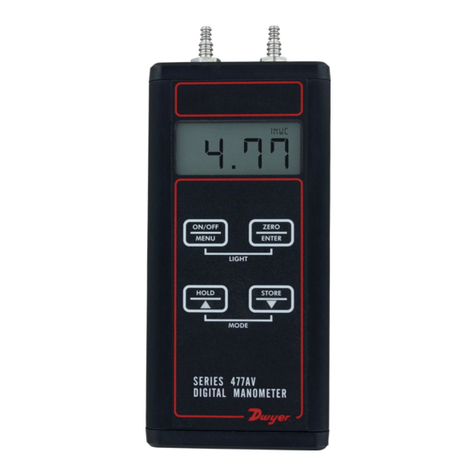
Dwyer Instruments
Dwyer Instruments 477AV Series Specifications-installation and operating instructions
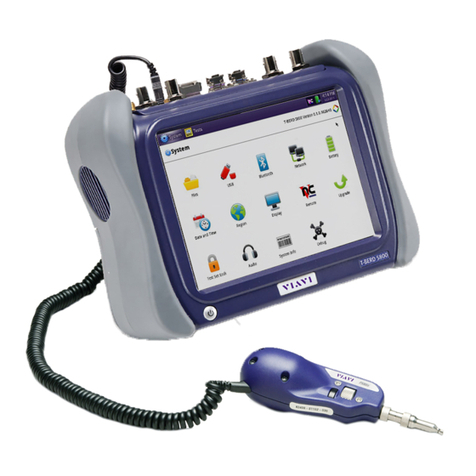
Viavi
Viavi T-BERD MTS 5800 Quick Card
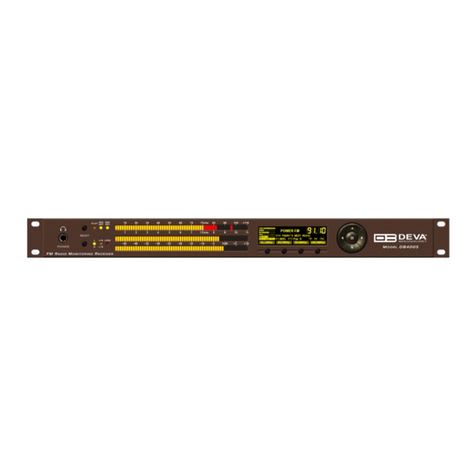
DEVA Broadcast
DEVA Broadcast DB4005 Quick user guide

LMI
LMI 585 Plus Mastering Instructions

Bellingham + Stanley Ltd.
Bellingham + Stanley Ltd. E-Line 90 instruction manual
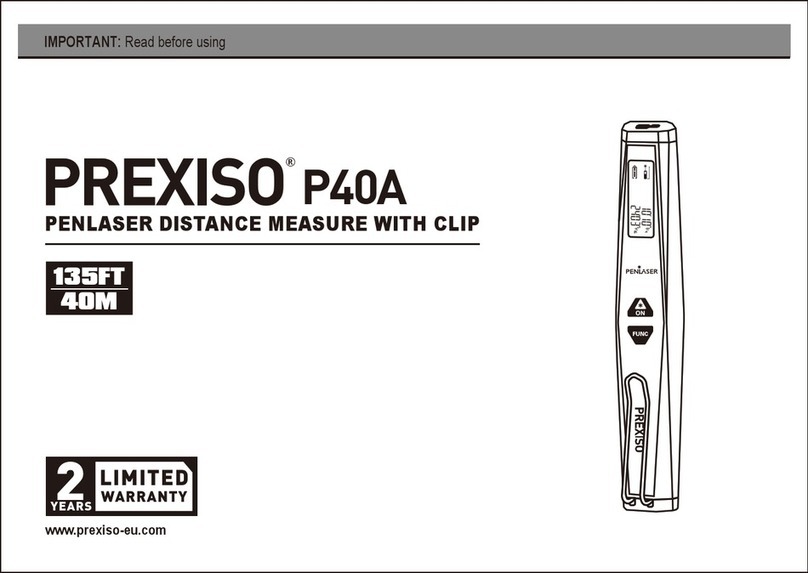
Prexiso
Prexiso P40A manual

